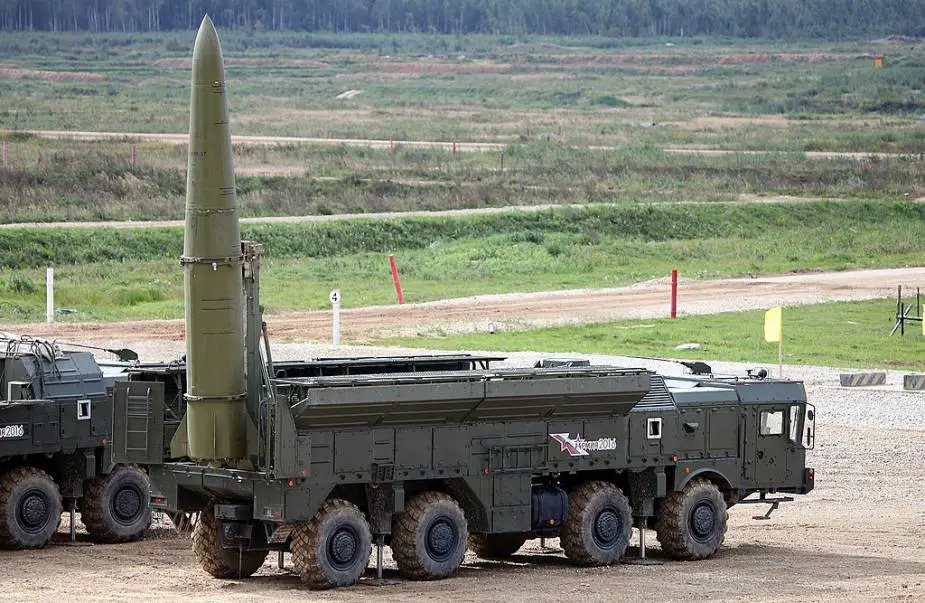The Belarussian armed forces have started independent use of the Iskander missile systems received from Russia, the Belarusian Defense Ministry said: “Belarussian servicemen have started fully independent operation of the Iskander tactical missile system”. “Belarussian servicemen underwent training in the Russian Federation. After completing their theory course, the artillerymen underwent hands-on training on Belarusian military grounds.”
Follow Army Recognition on Google News at this link

9P78-1 TEL (Transporter, Erector and Launcher) of 9K720 Iskander-M SRBM system with 9M723K5 missile displayed at Armya 2016 defense forum near Kubinka (Picture source: Wikipedia/Vitaly Kuzmin)
The Belarusian crews of Iskander include only officers, ensigns and professional soldiers. Chief of the missile and artillery department of the Belarussian General Headquarters Ruslan Chekhov said the troops have sufficient Iskander missiles: “The Republic of Belarus has sufficient stocks of missiles to the complex to fulfil any mission”.
In late December 2022, the head of the Belarussian Defense Ministry’s ideological education department Leonid Kasinsky announced that Belarussian servicemen operating Iskander systems and S-400 air defense systems underwent training at joint Russian-Belarusian military training centers.
The 9K720 Iskander (NATO reporting name: SS-26 Stone) is a mobile short-range ballistic missile (SRBM) system. It flies at a terminal hypersonic speed of 2,100–2,600 m/s (Mach 6–7) and can reach an altitude of 50 km, with a range of up to 500km. The missile system was intended to replace the obsolete OTR-21 Tochka systems by 2020 in the Russian military; however, Tochka usage has been observed in Ukraine in 2022, despite denials to the contrary from the Russian government.
The Iskander has several different conventional warheads, including a cluster munitions warhead, a fuel–air explosive enhanced-blast warhead, a high-explosive fragmentation warhead, an earth penetrator for bunker busting and an electromagnetic pulse device for anti-radar missions. The missile can also carry nuclear warheads. In September 2017, the KB Mashinostroyeniya (KBM) general designer Valery M. Kashin said that there were at least seven types of missiles (and "perhaps more") for Iskander, including one cruise missile.















